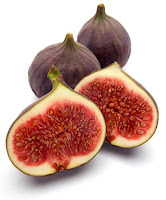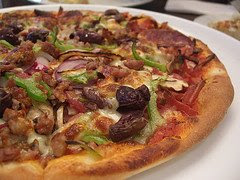Authentic Italian food, as defined, is very general in inspiration and based on fresh ingredients of the pristine quality standards. It can be said that this is food without pretense, even when it gets served in trattorias or restaurants. This cuisine takes you into the kitchens of Italian culture and its regions such as Lombardy, Piedmont and Tuscany to sample pasta, pizza, antipasti and risotto made the authentic way - fish and shellfish redolent from the fresh water, hearty treatments of meat and game and irresistible gelato.
Italian kitchen secrets
Secrets to Euro-Italian Recipes
Desserts & Dough's
If one is has fumbled around through the sites seeking Italian recipes, or asked someone as in how to prepare an Italian dessert, or even bought an Italian cookbook with enough recipes to last you for a lifetime or perhaps more.
But have you ever given a thought silently... as to what are the fundamentals or basic necessities of these recipes?
Have you ever wondered what makes them authentically Italian, what is it that they have in common, or what is the basic guideline or steps you require knowing in order to stay within the original method of the Italian-style of cooking.
Tiramisu cake
Have you ever been confused between Americanized Italian recipes to that of real Italian recipes? Here are some of the basic guidelines and ideas as to what constitutes European - Italian recipes. You may give a thought about Italians as the pastry kings of the world – but the picture is some what different because they are not even big on sugary foods. if one thinks that adding basil to any dish that it suddenly turns Italian, and this is just not so.
There is a selection of ingredients favoured in Italian dessert making:
Spices - The most common spice ingredients found in desserts are; cinnamon, and vanilla.
Liquors –
You will usually find that many call for some kind of liquor or wine such as; rum, Marsala, Maraschino, red or white wines and sometimes Cognac or other liquors. Types such as these are used most often in fruit dessert recipes, sometimes in cookies.
Coupled with apricots you will find; rum - with apples; rum or white wine - and with pears; maraschino.
Marmalades, Raisins & Nuts –
Marmalades are widely used for cookies and "Crostata" pie-sized tarts. And many other desserts Italians make are baked using nuts; pinoli, hazelnuts, almonds or sometimes pistacchi. Raisins are used in cakes, many times coupled with rum.
Cheeses –
Soft mild cheeses are repeatedly used in making cakes and pastries. Mascarpo
ne is one more commonly known, and is used often in the making of "tiramisu" a delicious and typical Italian dessert made with savoiarda cookies soaked in espresso and layered with an egg cream. The well-known ricotta cheese is used in crafting cannoli; the Sicilian tube cookie filled with sweetened ricotta tossed with flakes of chocolate and candied fruit. Certosino is another soft cheese that is used by the Bolognese to make a cake along with; cocoa, cinnamon, pinoli and almonds. This cake is a speciality of Bologna and made during Christmas and New Year's.
If Italians had the world's biggest sweet tooth, they would certainly be adding more sugars to their dessert recipes.
Dough's
The Italians use several different dough bases, this depending on the particular dessert. Here are some examples:
Pasta Frolla: This is used more often to make Crostate or pastries, and gnocchi
Babà Dough: This one takes allot of energy, is fantastic and light, and contains similar ingredients as the others. But the secret to this dough is in uniting the sugar perfectly with the egg, and by adding the flours very quickly thereafter.
Pan di Spagna: Used for layer cakes and in certain puddings
Brioche Dough: This dough is simple to make, but requires care and patience in the rising stage
Savoiarda: This dough is used to make savoiardi cookies (used in making tiramisù)
Sfogiata: This one is the most difficult. You might as well say it's the fundamental dough of the dessert arts. With this dough base they make a dessert called "Millefoglie," which is a light pastry that is covered with traces of pastry cream and dribbled with chocolate.
Don't forget that Italian desserts are accompanied by homemade grappas, lemoncello, sweet dessert wines or delightful liquors. This is always expected and really adds a wonderful accent to the end of a lovely meal.
Pasta Sauces & Preparations
They make as the rules of thumb when it comes to choosing to prepare a basic Italian dish. If you happen to be a wizard in the kitchen and can design something incredible yourself, by all means do so. But we seem to have to apply to some strict rules - on the count that many pasta sauces have been distorted and badly jumbled.
Pasta's Not Topped with Cheese
Believe it or not just because you are eating what is known as "pasta", does not necessarily mean that you may smother it in pecorino or Parmigiano.
Too Much Garlic & Onion: Just how much is too much?
Another intresting fact is that the Italians do not use 4 or more cloves of garlic in their recipes. Most recipes have been tampered with through the years, as to cater to different cultures with different tastes outside of Italy.
Garlic is used in fish & seafood preparations (1-2 cloves).
Recipes which contain mushrooms as an ingredient usually have garlic added to them. Wild game and pasta sauces made with duck, often call for both onion and garlic. Onion is added to pasta Carbonara, and also too many red sauces. Most often onion is used in sauces which also call for celery and carrots...
There are plenty of sauces that do not have neither onion nor garlic - like some crème sauces, lasagne, cannelloni (on occasion they use onion) and pasta's with a base of cheeses and those with butter. There are Bolognese sauces that do not call for garlic.
Garlic with these:
Almost all Seafood's, Mushroom pasta's, some wild game, pesto sauces. In seafood praparations based pasta's white wine is used, and in meat sauces red wine is added.
Onion with these:
Roasted meats like Ragù's, sauces with egg, red sauces. There are a lot of recipes in the Euro-Italian kitchen which add egg to their pasta's.
Here are some examples:
Tagliatelle in Egg Salsa
Boil Tagliatelle pasta al dente, then add it into a pan of melted butter- mix over low heat, and then add a mixture of: 3 eggs, anchovy and diced mozzarella. When the mozzarella begins to melt and the eggs begin to form a cream, add the pasta-mix and quickly serve.
Spaghetti alla Carbonara (Roman)
600g spaghetti, 3 whole eggs, 200g pancetta bacon (diced), 30g butter, 50g grated parmigiano, 1 onion (diced), 1 stalk of parsley, dry white wine (1\2 cup) and black pepper
Brown onion and bacon in butter. When brown add in the white wine and let evaporate slowly.
Beat eggs and add in: parsley, Parmigiano, and pepper. Boil spaghetti al dente. When done mix with egg mixture, mix well and serve.
Pasta Sauces made with Nuts is common in Italian cooking.
Egg Fettuccine with Nuts
700g fettuccine pasta, walnuts or hazelnuts (in big pieces), powdered sugar, cinnamon, dash of bread crumbs
Mix all ingredients together
It seems that a good combination with veal is of sage and garlic. Baby lamb is prepared with rosemary, sage and garlic when grilled. Veal can be prepared with onion or garlic, but the "Agnello" or lamb seems to favor garlic in the Italian recipes- unless being prepared with celery and carrots.
These rules of thumb are for several Italian recipes, and seem to be the ones most followed, but there are of course exceptions.
Vegetables in the Italian Kitchen
Italians were not the ones to invent boiled vegetables tossed in a bowl of butter. They blanched some tough type vegetables for 3-5 minutes then simply added them into the "Italian pan", one that was formally prepared with a garlic clove or two and some olive oil. Many, if not all, vegetables are prepared in this manner by Italians- though not all need to be blanched first. Some vegetables are cooked in oil with salt and pepper and simply sprayed with fresh lemon juice.
The Italians are also great in the flower preparation - they use; zucchini flowers that are not so opened, egg wash, flour and oil. You just have to cut off most of the stems, and the filament, cover in the egg wash and flour and deep fry them. The way they make them in Rome is fantastic! Somehow they mix in mozzarella and anchovy, they are scrumptious.

























 CORIANDER [coriandolo]
CORIANDER [coriandolo]










